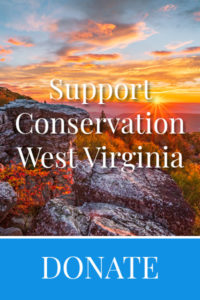West Virginians always lend a hand to help a neighbor.
That’s who we are.
Flooding
West Virginia has always been subject to floods. Now things are getting worse as floods become more frequent and more dangerous for both kinds of floods: flash floods that cause small streams to become dangerous water walls, and river floods — where a bigger river overflows its banks. Flash floods generally cause greater loss of life and river floods generally cause greater loss of property, says the USGS.
A report by First Street Foundation says that West Virginia’s infrastructure is at high risk from damage by a 100-year flood, one that has a 1% chance of occurring each year. In fact, West Virginia is at a higher flood risk due to warming weather than any other state. West Virginia’s infrastructure is uniquely vulnerable to a 100-year flood: 61% power stations would be at risk of shutdown, 46% of roads would be at risk of being inoperable, as would 57% of fire stations, 50% of police stations and 38% of schools. That doesn’t even begin to tally the loss of lives, homes, and personal property.
West Virginia’s legislature approved a flood resilience plan, but refuses to put any money into it. An unfunded plan is a disaster waiting to happen — one that could impact any of us any time. When will politicians in Charleston wake up to the dangers of flooding made worse by carbon pollution.
Extreme Weather
Climate change is making the weather in West Virginia go to extremes, causing big problems for people, animals, and the environment. As the Earth gets warmer, West Virginia is seeing more heavy rain and worse floods more often. These floods can destroy homes, roads, and bridges, making it hard for people to live their daily lives and costing a lot of money to fix everything. Also, when it gets too hot for too long, it can lead to droughts, which means not enough water for plants, animals, and people. This can make it hard to grow food and get clean water. It’s really important that we find ways to deal with these changes so we can protect our state and keep everyone safe.
Health: Allergies & Asthma
Have you noticed that local TV weather reports now report the pollen count? That’s because pollen counts are exploding, up 21% since 1990. We have earlier warm weather in spring, more intense heat in summer, and later warm temperatures in fall. Higher temperatures and more carbon dioxide in the air encourage plants to produce heavy pollen. So we get a longer, heavier pollen season.
Health: Ticks and Lyme Disease
Lyme disease is caused by a bacteria carried by deer ticks, and spreads to people and pets through tick bites. It can cause fever, fatigue, joint pain, skin rash, and serious joint and nervous system problems. It is spread through the bite of deer ticks.
Climate change has contributed to the expanded range of ticks, increasing the potential risk of Lyme disease. Hard winter freezes cause fewer ticks to survive, but where the winters become milder, ticks don’t need to hibernate. If you work outdoors, you are more exposed to Lyme disease. Farmers and landscapers, are especially at risk.
Here are some other impacts climate change will have on Lyme disease: a faster and longer developmental cycle, more egg production and more ticks wherever you see them, and an earlier tick season as winter’s become shorter. Warmer winters also mean higher survival rates of rodents that ticks like, meaning an increased tick population in spring and summer.

